Please log in to view store materials.
Hello, friends, Neighbor Elizabeth here!
Now that we’ve gotten our stitches cast on and we’re ready to continue with the pattern, let’s have a good look at that chart. Yikes!!!! Does the chart look intimidating? It’s not so bad, really. There are just a few things you need to keep in mind.
Stitches are handled differently depending on whether you are working on the right side (RS) or the wrong side (WS) of your work. For example, when we knit stockinette stitch flat, we know to knit on the RS, and purl on the WS, right? (Looking at the Stitch Key, the same symbol is used to indicate this for both sides.) Charts are merely a translation of what you see on the front/right side (RS), or “pretty” side, of your work. This means that you follow the sequence of stitches for RS rows from right to left, and WS rows from left to right. (The row numbers on the chart are your clues to which direction you should be following from.)
The other thing that might be a little unfamiliar with this chart, unless you knit a lot of lace, is the gray shaded “no stitch” areas. These “stitches” act as placeholders in the chart, and either don’t exist yet, or don’t exist anymore, due to increases and decreases. Think of it like a map vs. a globe. It’s very hard to show something with a curve on a flat surface, so maps must leave out certain details for practical reasons. And, don’t forget, if you just can’t get the chart to work for you, you can always write out the pattern. (Many knitters do this, anyway, so they can doublecheck that their understanding of the stitches matches what is in the chart!)
Now, back to the knitting….
Kitchener Rib Cast-On Using a Crochet Chain (cont’d from previous blog post)
Step Three
At the bottom of page 2 of the pattern PDF, you will see that under the hat instructions there are reminders to change your needle size as you work through the chart. For Rows 1 – 6, you will use your smallest needle, for rows 7 – 15 you will use your medium size needle, and so on. Begin working the chart from Row 1, a RS (right side) row. The first, and last, charted stitch are selvage stitches. For this pattern, they are always knit stitches. The first four rows of the chart make up the tubular edge. Every other stitch, not including the selvage, is slipped, holding the yarn in front, toward you.
Helpful hint: Row 1 seems counterintuitive. I always want to slip the stitch I am supposed to knit, but trust the pattern. It is correct. By Row 3, it will clear.
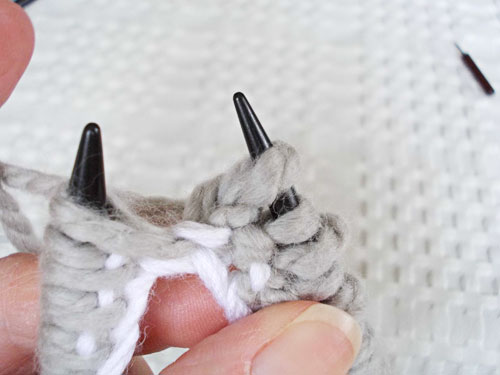
Step 3: Row 1 knitted stitch.
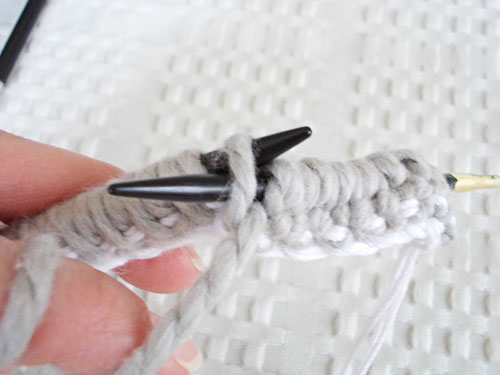
Step 3: Row 1 slipped stitch.

Rows 5 and 6 are regular 1 x 1 ribbing, and act as set-up rows for the Half-Fisherman’s ribbing in Rows 7 – 15.
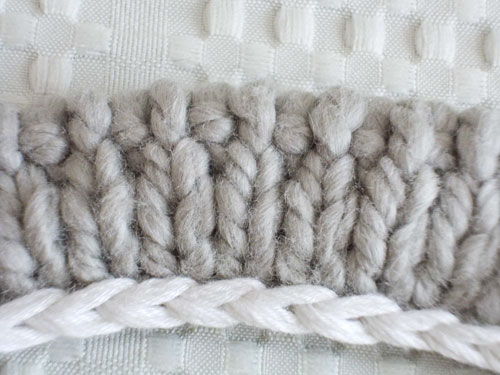
Step 3: Ribbed band viewed from the RS after row 6 is complete.
Step Four
Now it’s time to remove the waste yarn!
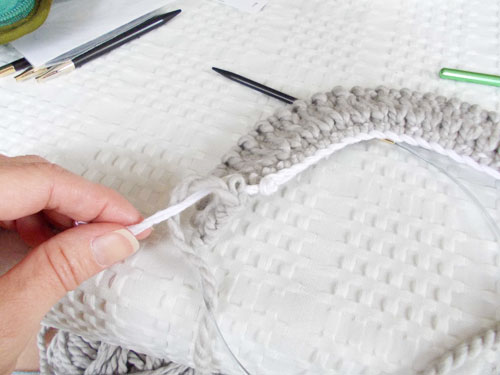
Step 4: Undo the bound-off end of your provisional crochet chain.

Step 4: Open up all of the loops from the provisional crochet chain.
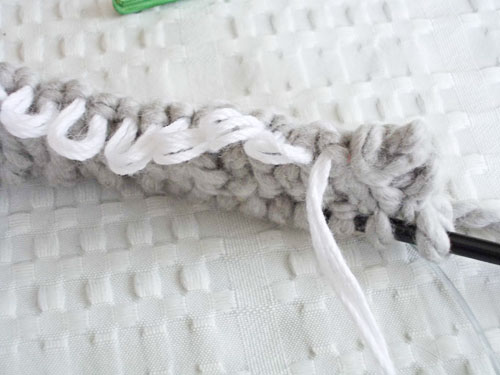
Step 4: Carefully remove the waste yarn.

Step 4: Tug on the edging horizontally and you will see the magic of this Kitchener Rib cast-on!
Step Five
Finishing the ribbed band for the hat is the final part of this Blog post. Whew! But, pretty soon, you’ll have done it! Switch to your middle sized needle (used for Rows 7 – 15). Continue working the chart from RS Row 7. Nothing tricky, this is the same Half-Fisherman’s Rib Stitch used for our swatch, and the needle should be the same size that gave you gauge. Special note on finished hat sizing: Because of the hat’s design, the ribbed edge is the only easy place to modify the finished depth of the hat. I designed it to fit low on the brow and forehead, as shown on the lovely model. If you would prefer a more traditional fit, simply leave off rows 14 and 15. This will reduce the finished depth by about ½ inch. I went ahead and did all 15 rows for my hat. The edging measures about 2½” gently stretched open.
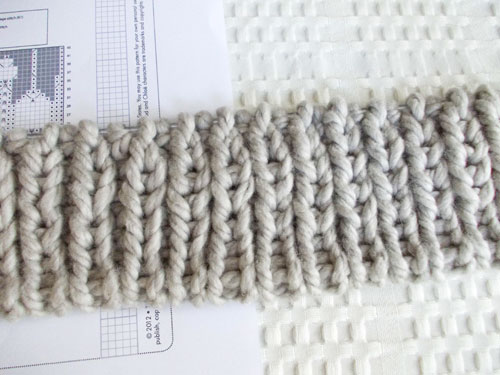
Step 5: Ribbed edge viewed from the RS…
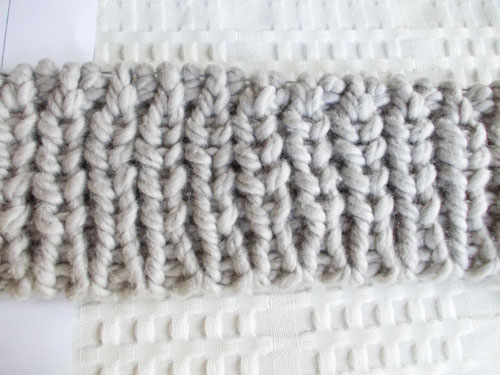
Step 5: …and, from the WS.
Next Time
Onward and upward! The shaping techniques that will make our lanterns start their ascent.